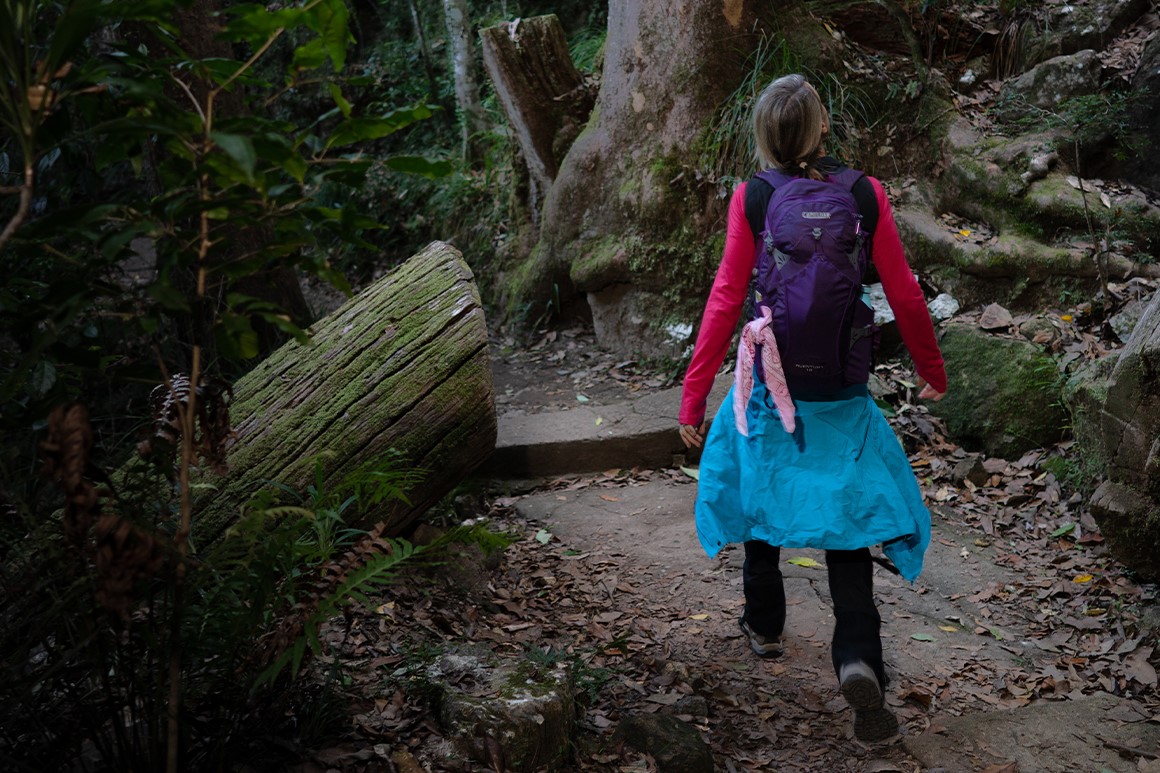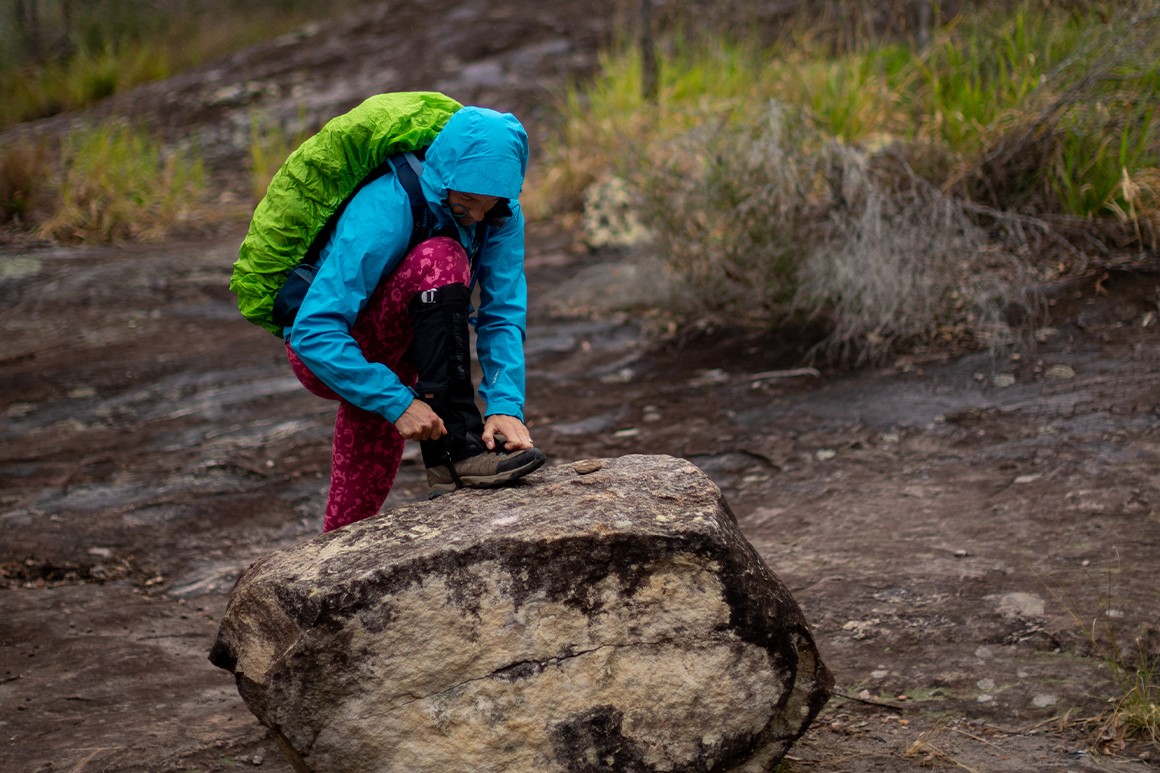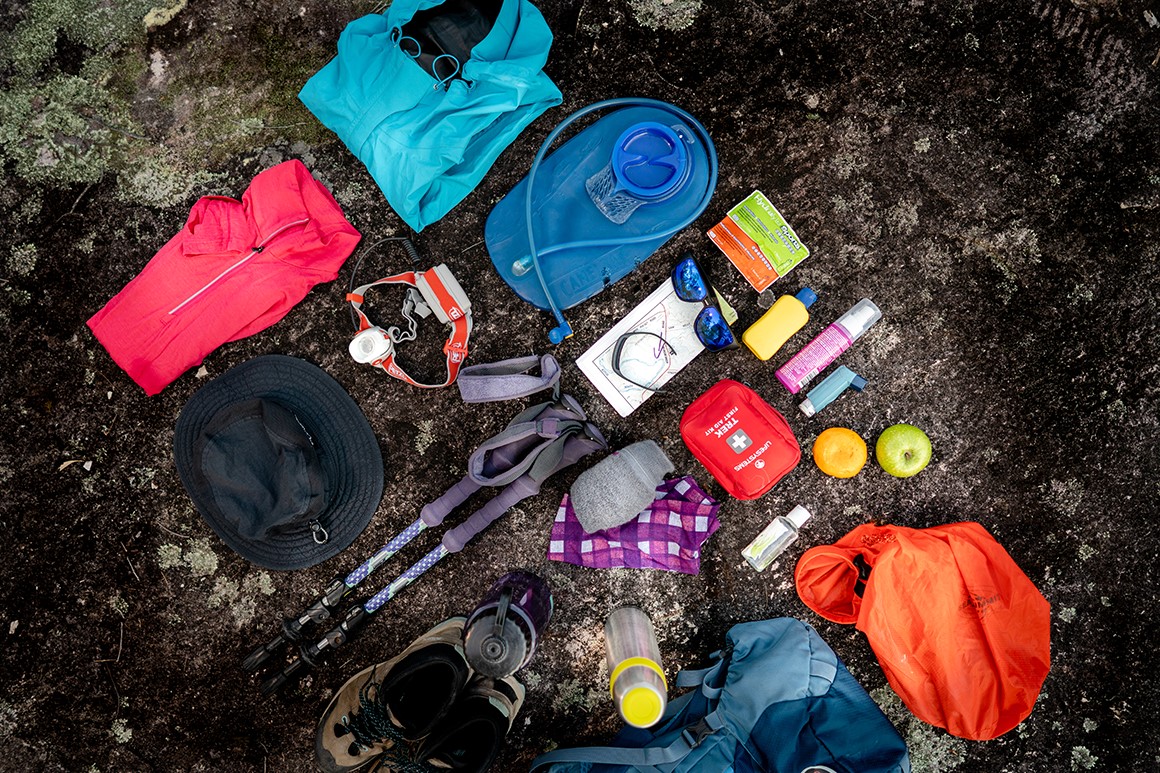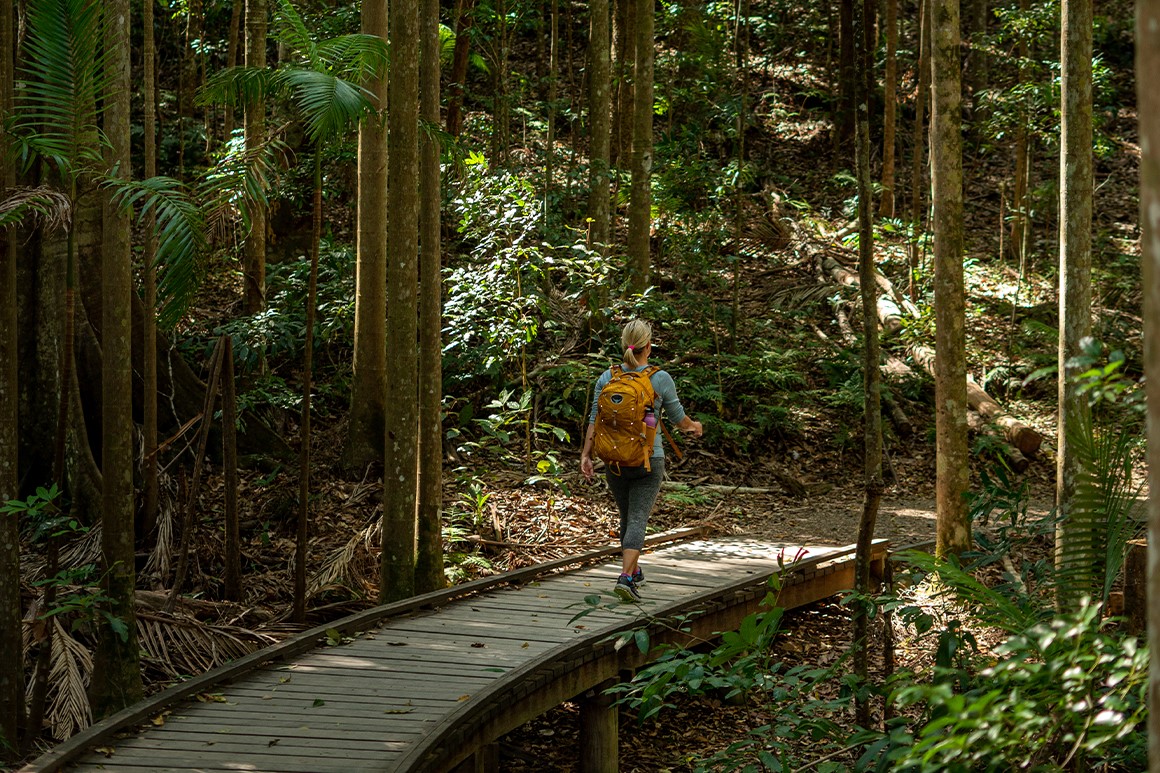- Categories:
And for the love of parks, we want everyone to get home safe and walk with care.
Out on the trails you truly get to experience the incredible biodiversity of Queensland’s protected areas, and absorb all the sights and sounds only nature can provide.
So, once you’ve got a few day walks under your belt, you may want to start planning a multi-day hike as your next adventure. Fortunately, Queensland’s parks and forests are home to many Great Walks and multi-day hikes.
We aren’t going to sugar-coat this—there’s a lot of preparation to do when planning and getting ready for a multi-day hike, especially if you intend to be self-sufficient and want a safe, enjoyable experience.
To help take some of the ‘think-work’ out of your first multi-day hike, we’ve created a beginner’s guide to some of the things you need to practise and plan for.
Get the essentials right

Training in gear builds resilience | Greg Cartwright © Queensland Government
Plan an overnight hike as your first full-pack experience. This gives you the chance to get used to your gear and walking with a heavy pack. If you’ve recently been injured or are coming back to walking after a long break, build it up slowly and be kind to yourself.
Train with your backpack on. Slowly, over time, add weight to your backpack to get used to how it feels. Climb steep terrain often with a weighted pack. This will help you get fitter, stronger and more mobile when walking with a pack.
Train in your hiking boots or trail shoes, and wear good quality hiking socks (merino or dryfit/wicking). Avoid cotton socks.
Get prepping!

High-energy snacks keep you going | Greg Cartwright © Queensland Government
Before you do your first overnight hike, choose a few weekends or two days back-to-back and hike at least 3 hours on both days. This will give you an idea of what it’s like to hike for a day and then wake up and do it all over again! It will help to build endurance and give you the chance to test how your feet/footwear go and how well you hydrate and manage nutrition on the trail over a couple of days.
Choose food that travels well, is a quick source of energy but won’t lead you to ‘crash’ or ‘hit the wall’. If you plan to cook meals on your multi-day hike, practise using your portable hiking stove. Ensure it has enough fuel and is serviced regularly. Choose simple meals!
Let there be light! On a multi-day hike, you will no doubt have to navigate your way around a camp site in the dark, so you need to get very familiar with how your head torch works, and how it feels moving around in the dark. Practise in your garden or go for a simple walk around the block in the dark. Your eyes will adjust over time, but it takes some practice to walk in the dark. You definitely don’t want to be trying to work out how your head torch functions when you are ‘out bush’ in the pitch black!
Be ready for anything

Prepare to face the outdoors—rain or shine | Greg Cartwright © Queensland Government
Train in all weather (when it is safe to do so—not during electrical storms or torrential rain!) to understand what it feels like to walk in high humidity, direct sun, strong wind, rain and cold. You also need to test out your gear to know whether it can withstand these conditions.
Sooner or later, you’ll have to deal with nature’s call—so make sure to be prepared! Some parks and camping areas have toilet facilities; many don’t. Check out the advice for the park or forest you plan to visit to find out what facilities are provided, and what you need to bring. You may be required to carry a trowel. You may need to practise squatting too! This idea can cause anxiety for new hikers, but it doesn’t need to. Always carry a loo roll in your pack along with hand sanitiser. Be mindful of the environment and other walkers—follow best practice for bush-toileting: bury human waste at least 15cm deep (50cm for sand) and well away from camp sites, tracks and water bodies.
Get geared up

Pack the right gear for the best experience | Greg Cartwright © Queensland Government
Phew, where do we start?
Wear the gear you intend to hike in. Choose dri-fit/merino/lightweight clothing that can be layered. Always carry a good quality rain jacket, seam sealed with a hood.
Be prepared for the climate/local conditions. Remember that when you are sleeping outside in a tent, on a thin inflatable mattress, you will feel a lot cooler than when you are home in bed under your doona. Take off your sweaty gear when you arrive at camp and layer up before the sun goes down.
Use a waterproof, sealed pack liner inside your backpack. Line your pack with a waterproof liner even if your pack has a rain cover for the outside. There’s nothing worse than reaching your camp for the night and pulling out a sodden sleeping bag!
Be familiar with your first aid kit. Consider doing a simple wilderness first aid course if you plan to be out hiking often, so that you know how to treat minor injuries and what to carry in your kit.

Walk regularly before your multi-day hike | Greg Cartwright © Queensland Government
Build your resilience. Hiking with a full pack is tough! But you can build mental and physical resilience by training and preparing your body and mind before you take on a multi-day hike. Consistency is key, so plan to walk regularly, wearing your gear and backpack, choosing terrain that is undulating and building up the time you are on your feet. Add intensity to the challenge by climbing sets of stairs or a steep hill and repeating. Learn to keep going even when you don’t feel like it—because once you are out hiking in the bush, you have to keep going until you reach your destination!
Ready?
Now you’re all sorted, it’s time to get out there and give it a go. Multi-day hiking, tick!
Find a Queensland National Park with a multi-day hike to suit you.
Before you leave home, remember to check park alerts for the latest information on access, closures and conditions.


